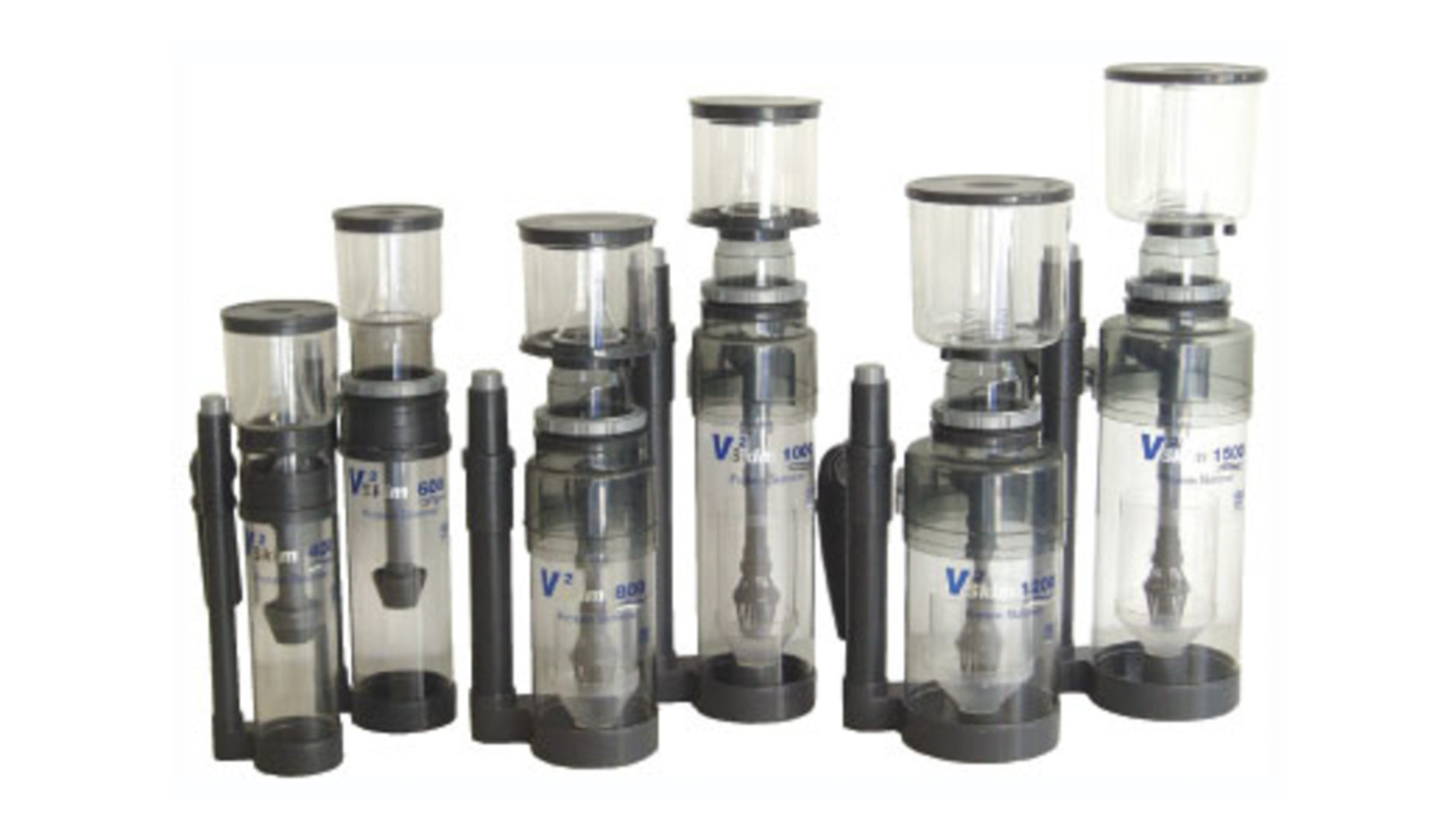What's A Skimmer Anyway?

Over the many years that marine aquarium keeping has been a popular hobby, many trends have come and gone, especially in regard to filtration. Some of these ideas had merit and excellent applications, other were less successful and often caused as many problems as they solved. There are a few pieces of equipment that have stood the test of time, and are still nearly ubiquitous in the hobby, first and foremost among these is the protein skimmer, also less commonly called a foam fractionator. They got their names because the waste product they make a foam, to which binds a fraction of the compounds available for removal, and protein skimming came because these compounds are most frequently proteins.
So, what's a protein skimmer? The short answer is that it is a kind of filter that uses the surface tension of bubbles and the ionization of waste materials to remove a variety of pollutants from saltwater in a process called adsorption. A pump pushes water and oxygen into a contact chamber, churning very fine bubbles into a cone that allows foam to develop in the tightening diameter of the cone. If there is enough protein to hold the foam together, it builds up and then overflows like a pot full of boiling rice. Unlike a boiling rice pot, skimmers have a collection cup where the waste foam collects (instead of burning onto the side of the pot...)
This is a very natural process, seen by anyone on a saltwater beach anywhere, where the waves leave lines of foam on the sand. This process is super effective at removing things like dissolved and suspended fish waste, uneaten fish food, and tannins which are compounds that stain water. As a result of removing these compounds, remaining filtration becomes less strained and more effective. The skimmer basically removes waste before it has a chance to break down, and so all the other filter types work less hard. There is less particulates to be removed by your mechanical filtration like floss or filter socks, there are less compounds to be removed by chemical filtration like activated carbon, and because much of the fish waste is removed, there are less nitrogen-based compounds for your biological filter to work on, making your bacteria work harder on less food, and leaving a cleaner tank overall.
Skimmers also offer benefits in that they mix atmospheric air and tank water very thoroughly, which aids in gas exchange. This is important; maximizing the amount of air contact stabilizes the carbon dioxide levels in the aquarium, with those in the room (which is usually lower than the levels in the aquarium). Less carbon dioxide in the water forms less carbonic acid, which in turn elevates and stabilizes the pH of your aquarium. (See our articles on pH). For hobbyists with elevated carbon dioxide levels in their home, utilizing skimmers paired with CO2 scrubbers can be a very effective tool for pH management. These scrubbers can be as high tech or as low tech as you want them to be and are another article.
Skimmers are often also used in conjunction with ozone generators, and this makes a ton of sense. Ozone is injected into the bubble chamber with the oxygen and there reacts with anything and everything it can. This process kills any pathogens and bacteria in the water, it makes the skimmer more efficient as the oxidized waste products are more easily skimmed, and it results in a brilliantly clear display because yellowing compounds are especially vulnerable to oxidative activity. If dosed correctly, this is a low-risk activity. We'll do a deeper dive surrounding ozone and UV sterilization in another article. One note of interest is that not all skimmers are ozone safe. V2 skimmers available from QM partners are rated for ozone usage. Always follow manufacturer instructions about the limitations of any skimmer.
So, what's the catch? While this is a very effective way to remove a broad spectrum of dissolved organic waste, it will also remove a limited amount of desirable amino acids and trace nutrients from your saltwater. For hobbyists that are only interested in keeping fish and motile (things that move around) invertebrates, this isn't going to be an issue. For hobbyists interested in keeping full blown reef aquariums this nutrient removal is something that should be addressed. Some hobbyists will run Protein skimmers periodically, turning it off during the day, and turning it back on at night, or utilizing some other intermittent schedule. If you are going to do this, we would recommend the day/night method, but you should be cautioned not to make huge adjustments to an established system, as it can result in a spike in the untreated pollutants when your biological filtration is not ready for the extra load. Instead of this, you could consider a good dosing regimen as there are a wide variety of quality amino acids like Amino-Organic and trace element supplements like Pro-Coral Mineral available from Tropic Marin, or better yet, an increase in your volume or schedule of water changes using a quality salt mix (and we use in house and recommend Tropic Marin Salts).
For the vast majority of you, we strongly recommend the constant use of a skimmer. There is a skimmer that will fit just about any aquarium you can get or build, and their benefits vastly outweigh their drawbacks. This is not a cheap investment, but you get what you pay for. We offer two full lines of skimmers between our G-Series and the V2 Skim series; we're likely to have a skimmer available for your aquarium. Ask your Local Fish Store about getting you the right skimmer for your setup today!